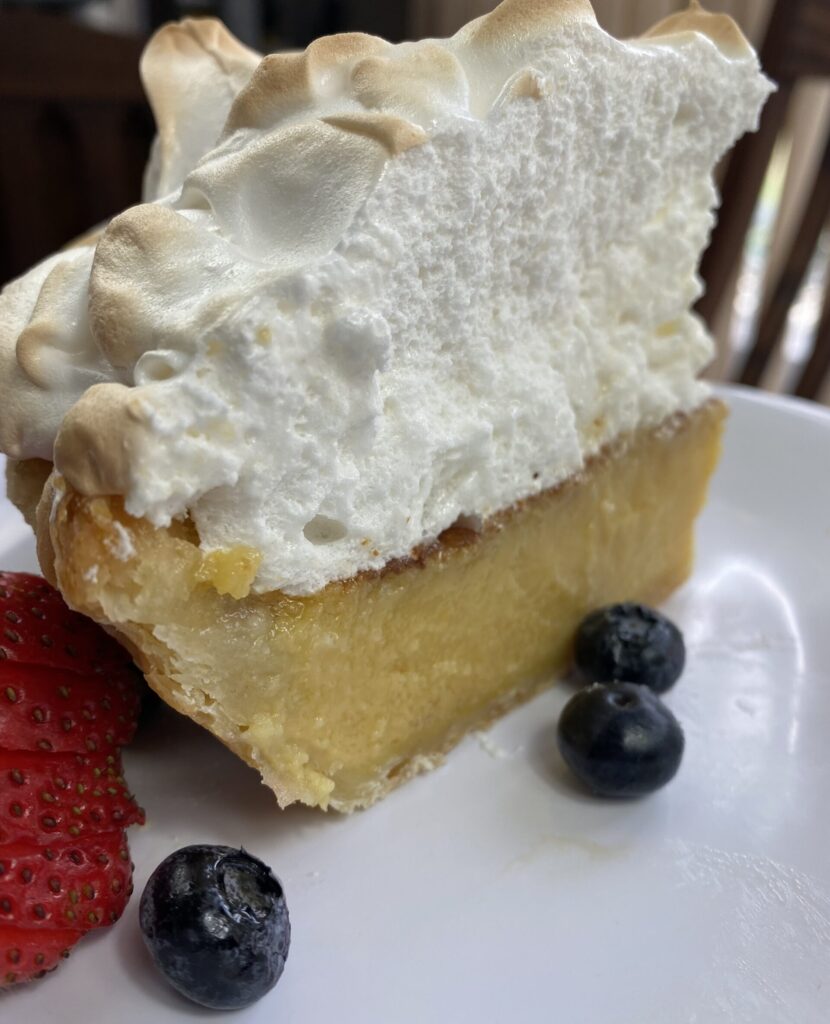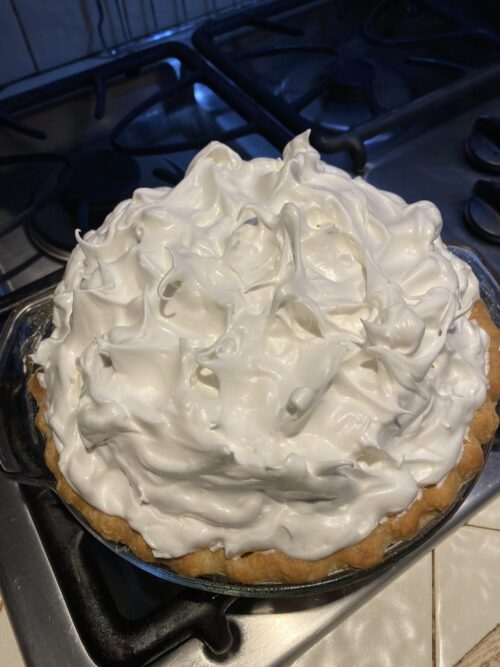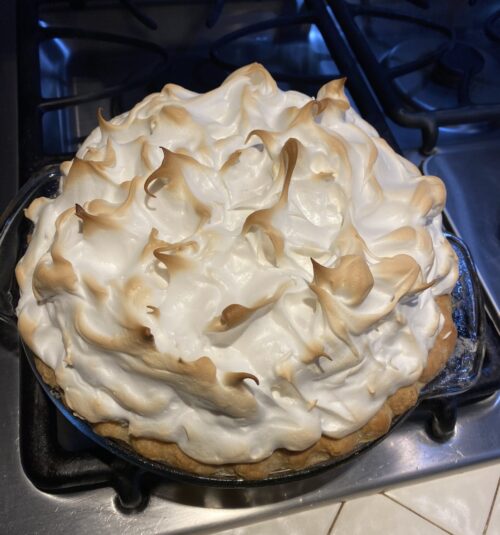Chess Pie is truly a southern thing. The traditional Chess Pie is a common man’s pie; its primary ingredients could be found in anyone’s pantry in the south, so it became the “go-to” dessert when one was called for in a pinch. Imagine a friend or relative coming down the road to your house. You can see (or hear) them a mile away because because this was colonial days and horses don’t travel fast. Or they may have walked over. So your company arrives and you know that they have exerted significant effort to get to your door. What do you do? Roll out the hospitality wagon and welcome them warmly! After all, you don’t see a lot of people outside of your immediate household anyway.
So, it’s probably early afternoon and you have to get supper finished up. They already know you will have a rib-sticking meal for their replenishment. You are bustling in the kitchen and your dear husband calls back, “Harriett, what’s fer dessert?” You reply humbly, in your southern accent, “Oh, jest pie!”
Another school of thought takes into mind that few people had refrigerators back then. Most homes used a “pie chest” that they kept near the kitchen, with ventilation holes and/or screens that kept the flies out. That would be the best place to put a pie to keep it edible for a longer time.
A more staid explanation offers that it is a derivative of British “cheese pie” or that it is named for Chester, England. Take your pick, what remains the same for each of these theories is that this pie is an old, basic recipe that is still beloved in the USA.
Chess pie has benefited over the years from the availability of flavorings that may not have been commonplace in colonial America. But a traditional Chess pie will always have a small amount of its signature ingredient, cornmeal, and some vinegar. Its sugar content is credited for its touted shelf life. Food safety traditions today dictate refrigeration once this pie has been out for two hours.
The traditional Chess pie calls for whole eggs stirred into a fairly simple custard mixture that is poured into an unbaked pie shell, although an 1877 cookbook (Estelle Woods Wilcox’s “Buckeye Cookery”) separated the eggs and called for a basic meringue. My grandmother’s riff on the Chess Pie genre calls for evaporated milk (a shelf stable ingredient to have on hand) and also separates the eggs for a more luxurious filling, retaining the egg whites for meringue that makes a great finisher for this rich pie.
Gram’s Chess Pie

Ingredients
Instructions
-
Preheat oven to 425 ° F
-
In a medium bowl thoroughly mix flour, cornmeal and eggs.
-
In a medium saucepan mix the sugar and evaporated milk. Heat over medium heat, stirring occasionally, until milk just begins to steam and sugar is melted.
-
Add one cup of the hot mixture, 2 tablespoons at a time, to egg mixture, stirring well with each addition.
-
Pour warmed egg mixture into remaining hot milk in the saucepan and return to just steaming hot.
-
Remove from heat and add butter and vanilla.
-
Pour hot filling into pie shell and immediately place in hot oven.
-
Bake 15 minutes at 425 °F.
Reduce heat to 350 ° and bake for 35 minutes or until center of filling barely shakes. The pie will develop its trademark dark "crust." Temperature should be 190 ° to 200 ° F when taken at the center of the pie.
-
Remove from oven and turn oven up to 475 ° F or to Broil setting.
Apply meringue to the pie.
-
Brown meringue for no more than 3 minutes.
Let pie cool completely before cutting.
-








